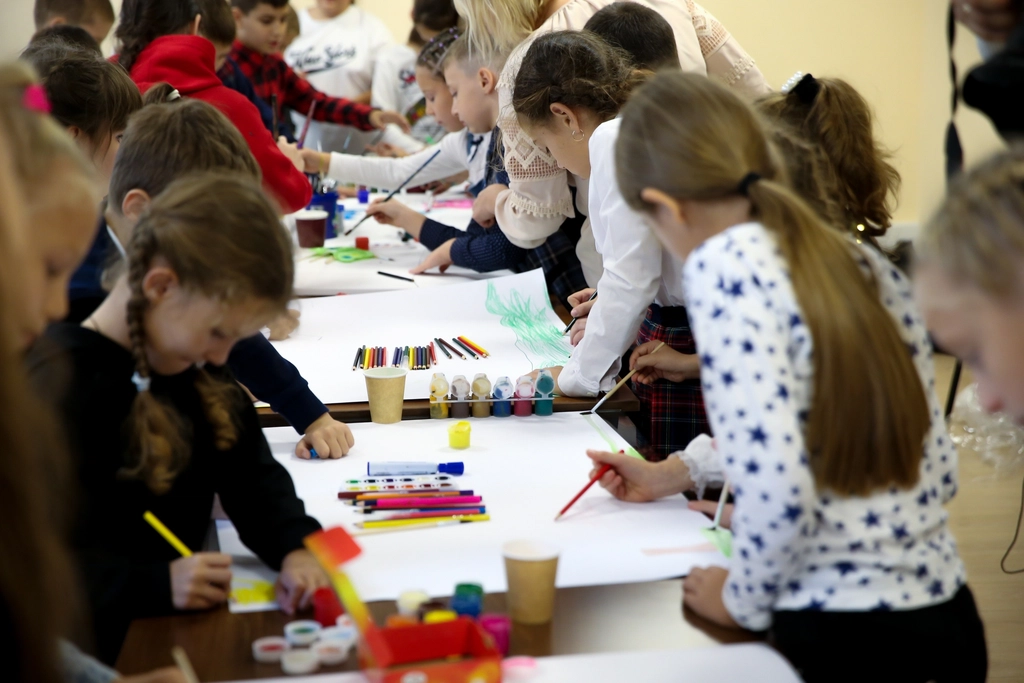Introduction
Hoje gostaria de compartilhar com vocês um plano de aula super dinâmico e divertido que desenvolvi para ensinar as cores primárias às nossas crianças da educação infantil. Sabemos o quanto é importante introduzir conceitos como esses de forma lúdica e envolvente, e é exatamente isso que esse plano proporciona. Nossa aula tem duas atividades práticas, onde as crianças vão poder colocar a mão na massa (ou melhor, na tinta!) para entender na prática como funcionam as cores primárias.
Anyway, let's get to the plan and don't forget: if you liked it, comment!
Goals
Main goal:
- Introduce and explore the concepts of primary colors (red, blue and yellow) to children, allowing them to understand the basis of colors and their importance in art and everyday life.
Secondary Objectives:
- Stimulate children's creativity through practical activities related to mixing colors.
- Develop observation and visual discrimination skills by helping children recognize primary colors in their environment.
- Promote collaboration and interaction between children during group activities.
- Encourage children's artistic expression, allowing them to explore colors freely and creatively.
Introduction
Estimated Duration: 10 – 15 minutes
- Start the class with a conversation about colors, asking children which colors they know and which are their favorites.
- Introduce the primary colors, explaining that they are special colors that cannot be created by mixing other colors.
- Show visual examples of the primary colors (red, blue and yellow) through cards or colored objects.
Development
Review of Previous Knowledge
Estimated Duration: 5 – 10 minutes
- Quickly review the colors that were discussed in the previous lesson, encouraging children to identify them in objects around the classroom.
Presentation of the Theory
Estimated Duration: 10 – 15 minutes
- Explain the concept of primary colors, highlighting that they are pure colors that cannot be obtained by mixing other colors.
- Show examples of objects or images that contain primary colors to reinforce visual learning.
- Carry out simple color classification activities, asking children to separate objects by primary color.
Practical Activities
Estimated Duration: 20 – 25 minutes
Activity 1: Color Mixing
- Distribute paints in the primary colors (red, blue and yellow) to each child or group.
- Instruct children to experiment with mixing primary colors to create new colors.
- Observe and discuss the results of mixing, highlighting how primary colors are essential to creating all other colors.
Activity 2: Art with Primary Colors
- Provide white paper and art materials (brushes, colored pencils, crayons) for children.
- Encourage children to create a work of art using only primary colors.
- Allow children to express their creativity and try different painting and drawing techniques.
Return
Learning Check
Estimated Duration: 5 – 10 minutes
- Gather the children in a circle and review what they have learned about the primary colors.
- Asking questions like “What are the primary colors?” and “What happens when we mix primary colors?” to assess children's understanding.
Student Feedback
Estimated Duration: 5 minutes
- Give children the opportunity to share their experiences and feelings about the activities carried out.
- Encourage children to express what they liked most and if they had any difficulties during the class.
Conclusion
Estimated Duration: 5 – 10 minutes
- Recap the concepts learned about primary colors, emphasizing their importance in art and everyday life.
- Praise children's efforts and creativity during activities.
- Highlight that primary colors are the basis of all other colors and encourage them to continue exploring and creating with colors.





